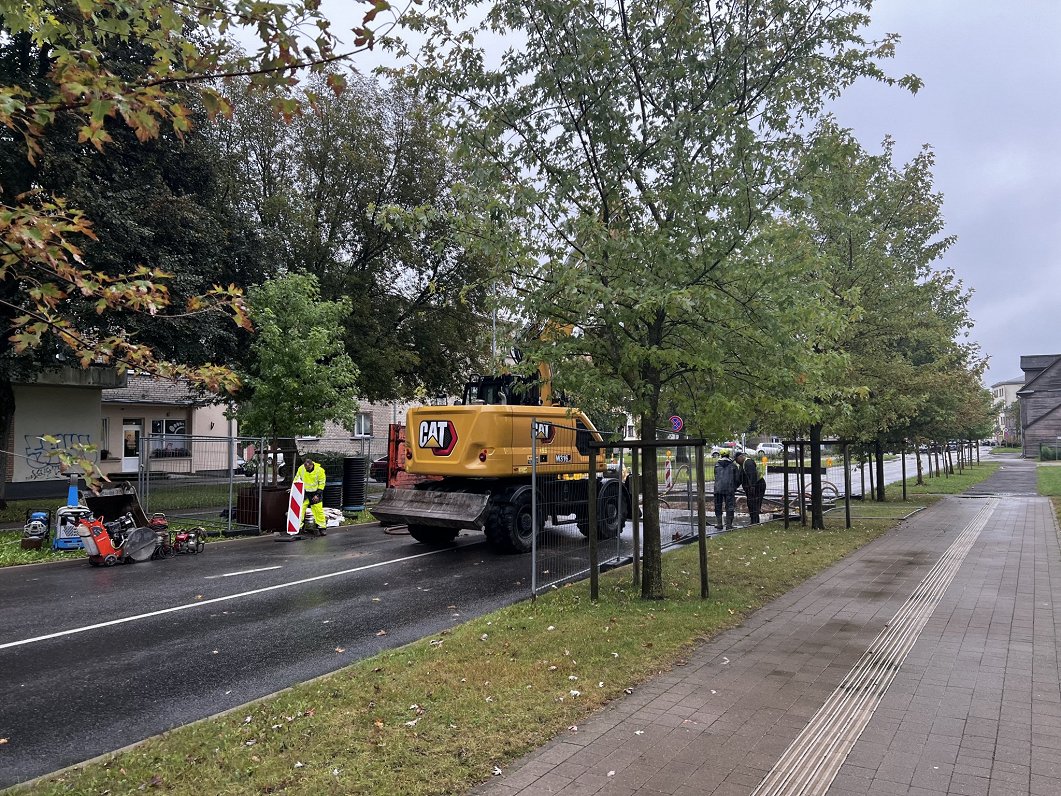In the center of Jelgava, a section of Pulkveža Oskara Kalpaka Street near Ozols Square was closed last week because of sinking of the carriageway, under which sewerage networks are supposedly located, after the summer floods. Active works are now underway.
"Washouts and sinkholes have been observed at the overpasses, at Čakstes Boulevard and, in fact, on the pavements in many places. Most of them have already been eliminated," said Jurijs Strods (National Alliance), Deputy Chairman of the Jelgava City Council.
In Jelgava, the local authority will outsource the audit of all pumping stations. The findings are expected at the end of October. So far, it has been established that the stations need an independent electricity supply, as many were toppled and damaged during the storm at the end of July.
The fateful floods have also shown that three of the city's seven sewage collectors, which either overflowed or barely survived, need to be rebuilt. The municipality wants to ensure that in the event of heavy rains, water can flow to other, emptier collectors.
"I am not saying that they will be able to prevent such a volume, but it will reduce the impact," says Strods.
The municipality hopes to get money for the work from a state aid program. Together with planning, the rebuilding of the collectors could take at least two and a half years.
The devastating floods in the summer also hit Jūrmala hard, especially in Asari, Melluži and Pumpuri. It has been noted that many parts of the municipality have problems with overgrown ditches, which are now being cleaned. In parallel, the storm water drainage system in the town is being cleaned up. Andrejs Zolotojs, head of the municipality's civil engineering department, estimates that the minimum cost of the necessary upgrades could be between EUR 1 and 1.5 million.
"This is the minimum that should be invested at the beginning so that we don't have problems like we had this time, at least at a certain stage. We have the Lienes Street collector, which needs to be rebuilt. The volume of water to be discharged will increase and the collector will bring with it the treatment plant with all its pumps. And then the amount can start from three million upwards," says Zolotojs.
The municipality could try to clean up the ditches that carry the water to the Gulf of Riga next year, but it could take up to two years to improve the stormwater drainage system, Zolotojs said.
Latvia's system of flood mitigation measures is too fragmented - it is governed by three separate laws. The Ministry of Agriculture and the Ministry of Climate and Energy are responsible for this, as concluded by Saeima Chairwoman Daiga Mieriņa of the (Greens and Farmers Union), whose working group proposes to change the procedure.
"Considering that for 30 years there were no drainage systems as such in towns, because the law only defines rural areas, it is now an open question whether to define towns as well in the law or simply remove the word "rural" and then leave the drainage system for the whole of Latvia. So it is automatically both urban and rural," says Mieriņa.
Mieriņa cannot give a clear answer as to when the law might be amended, except to say that the sooner the better. She suggests that only the Ministry of Climate and Energy could be responsible for water management, including flood prevention.


























